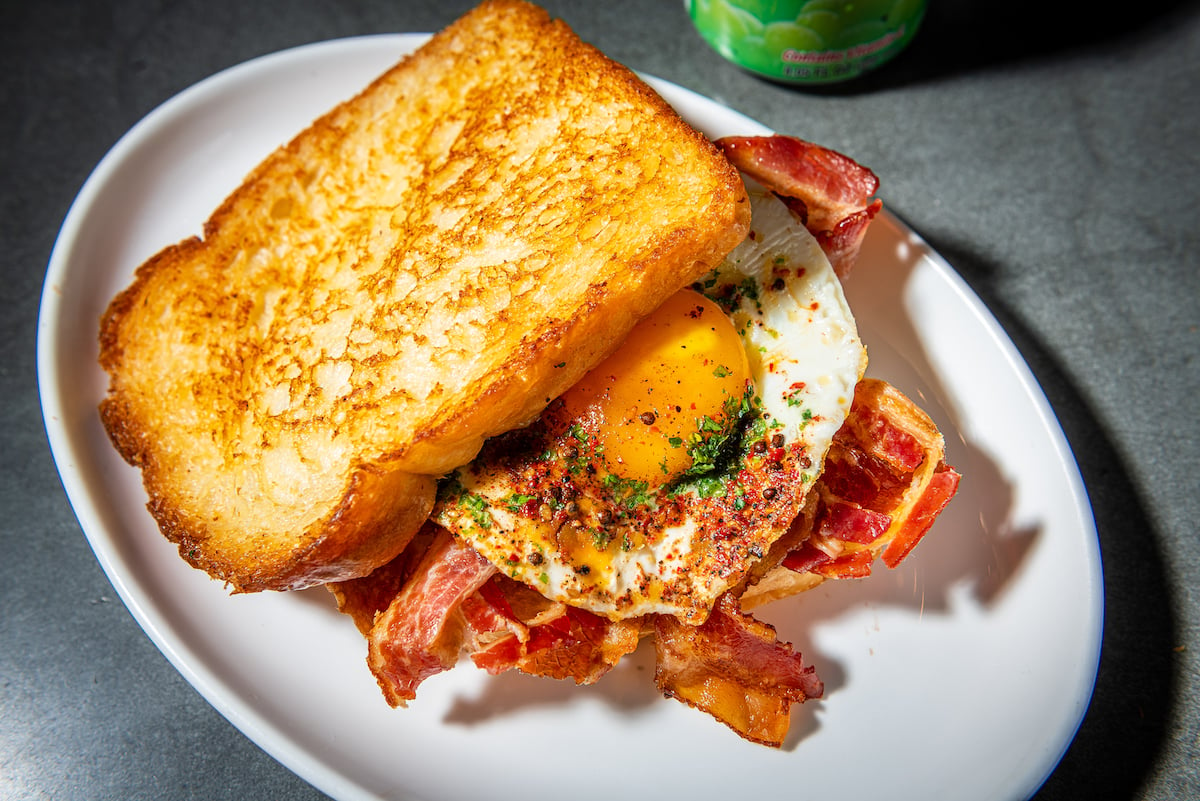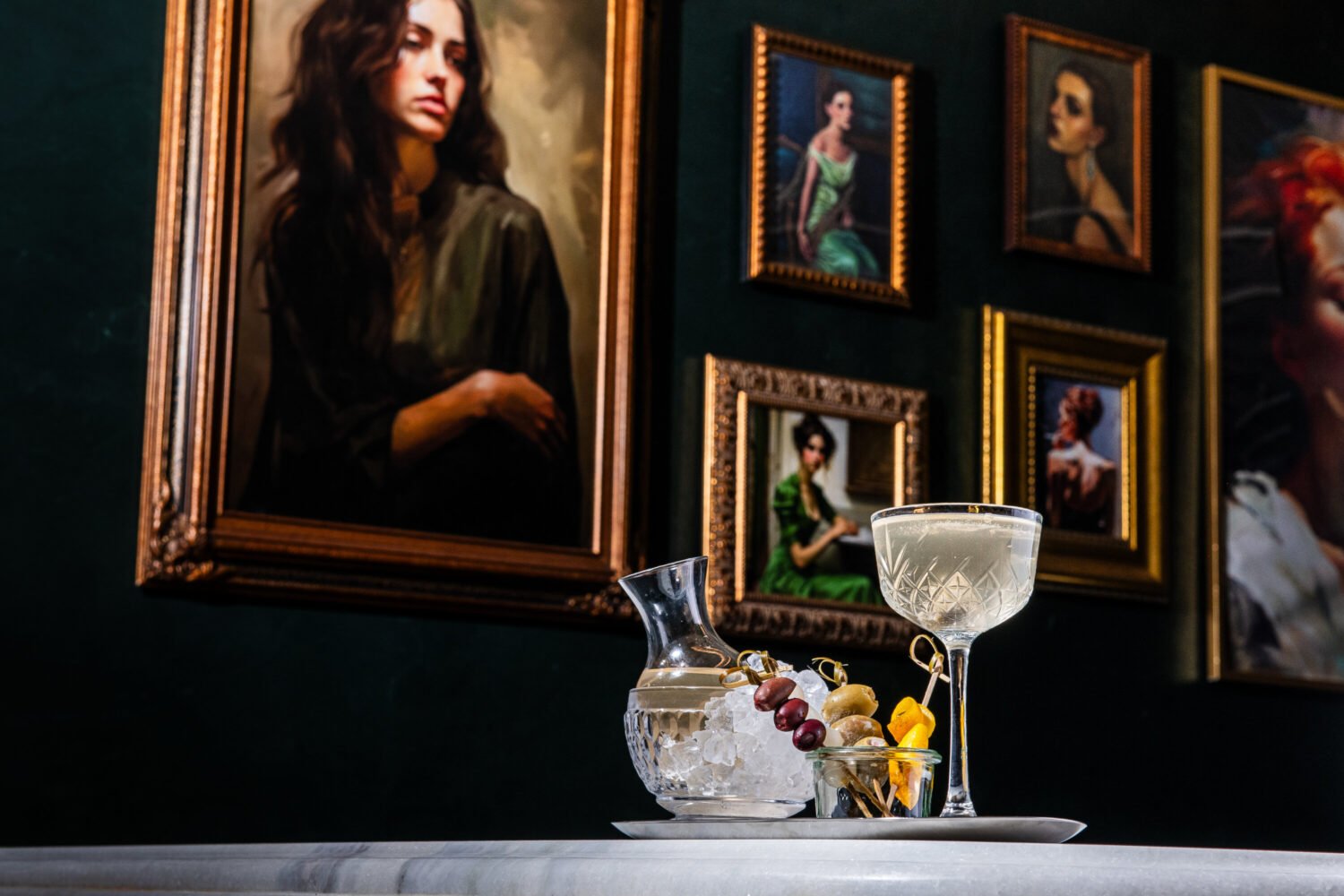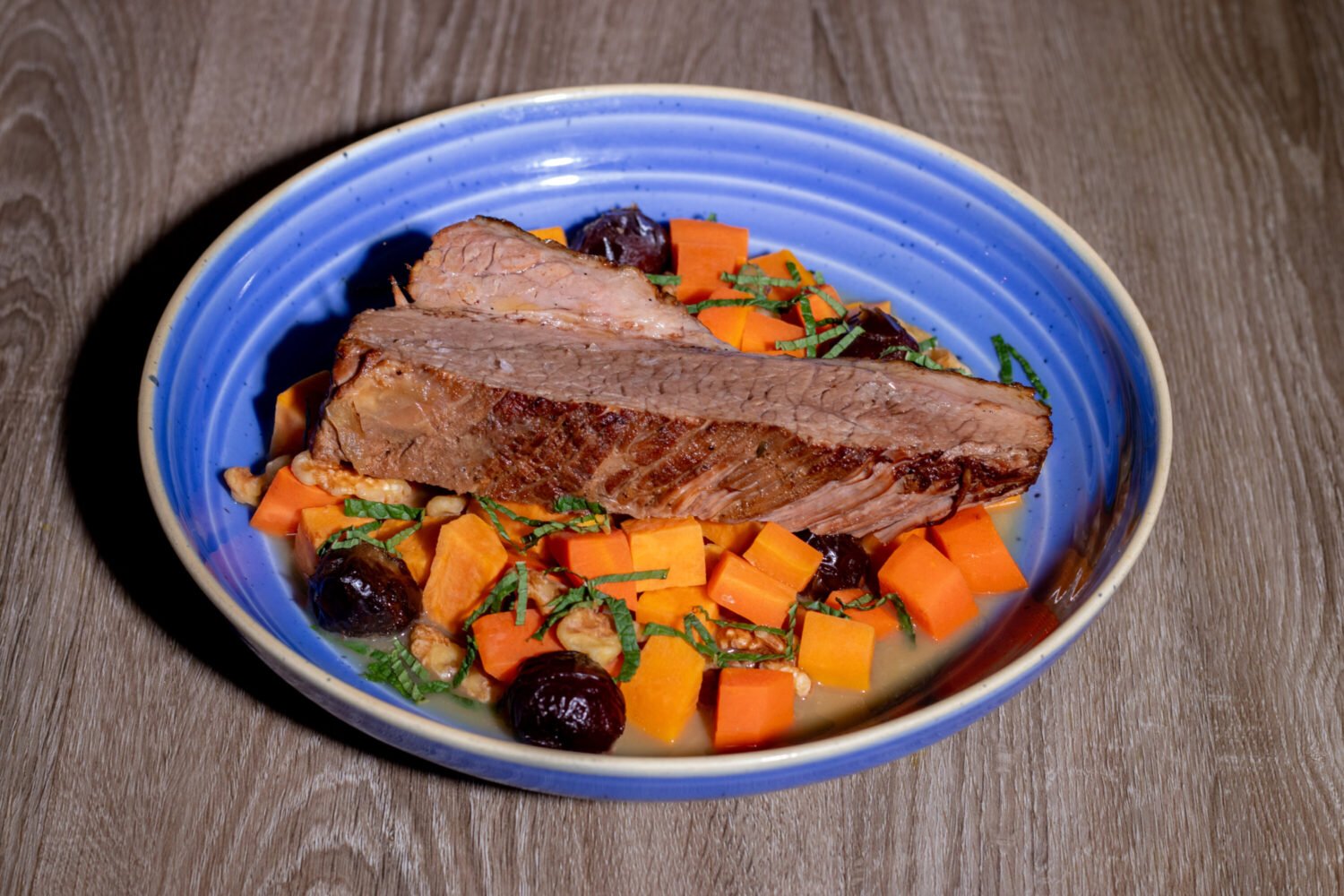
Unless you follow the local dining scene the way news junkies follow politics, you’ve probably never heard of Leonardo Marino. He’s the chef handpicked by Eric Ripert, of Manhattan’s famed seafood temple Le Bernardin, to run the kitchen at Westend Bistro. Ripert has lent his name and peripatetic presence to the Ritz-Carlton restaurant.
When Westend Bistro opened last fall, celebrity chef Ripert was the draw for many diners. Increasingly, Marino is why they keep coming back.
What they’re returning to is a very different restaurant from the Westend that debuted in November, and it’s still evolving.
Ripert, who mingled with diners and was highly visible during that first week, is now settled into his role as long-distance chef—he takes the Acela to town every two or three weeks to taste and critique.
Meanwhile, Marino has been given leeway to experiment, drawing on his passions and background—he was raised in New Jersey by parents who immigrated from Puglia. The best example is his tagliatelle Bolognese, inspired by his mother’s but lighter and more elegant than most stateside renditions of the red-sauce standard. It’s as fine a bowl of pasta as you’d find in Italy.
Dismissed by some food bloggers as blandly conservative early on and not as inventive as recently minted bistros like Central Michel Richard and Brasserie Beck, Westend’s menu has gotten more interesting—not that you’d know it from the still-terse descriptions.
Among recent specials is a cumin-scented pork shoulder, cooked 24 hours and paired with rice and peas and sweet-pepper relish. The dish is an adaptation of a Puerto Rican standard Marino ate for years in New York City. The slow-cooked meat melts in your mouth, while the relish adds a jolt of spice.
Marino also has been playing around with a nearly guilt-free take on barbecue—a lunchtime pulled-veal sandwich with Carolina mustard. And he’s been tinkering with sides: tender roasted baby vegetables and an ethereal squash casserole.
There are still plenty of bistro classics: golden fries, a perfectly seared flatiron steak with shallots, a fried duck egg on a duck-confit-studded salad. But for a deluge of chorizo, the steamed mussels would be perfect, with an elixirlike broth for dipping the fries.
A handful of dishes summon Le Bernardin, from a silken tuna carpaccio, glossy with extra-virgin olive oil, to the marvelous fish burger with fennel, oven-roasted tomatoes, and saffron aïoli. The fist-size pork pies, spiked with chicken livers sautéed in Cognac, and a buttery, brined whole roast chicken originated at Le Bernardin, too.
Desserts, which were often disappointing, have been reimagined. Most satisfying is a nougat glace, an oval of frozen cream in a delicate sauce scented with orange and scattered with pistachios and hazelnuts. Creamy chocolate pudding with gooey caramel and a blob of whipped cream is a close second.
There have been changes in the dining room as well. Diffuse lighting bathes the space in a red-amber glow. Booths are cushy, large windows frame the street scene, and a new patio with market umbrellas is one of the more civilized al fresco dining spots in DC. Still, the place lacks a bit in personality. The endless loop of tinny house music doesn’t help, and at night when crowds descend, the noise becomes cacophonous.
Sloppy moments—the underdressed salad, watery rillettes, fish that’s more raw than rare—still occur. As far as Westend has come, and it has come far, there’s some fine tuning to be done. Given more room to play, Marino might make Westend more consistent—and an even more interesting place to eat.
This review appeared in the September, 2008 issue of The Washingtonian.
Related:
100 Best Restaurants: Westend Bistro











